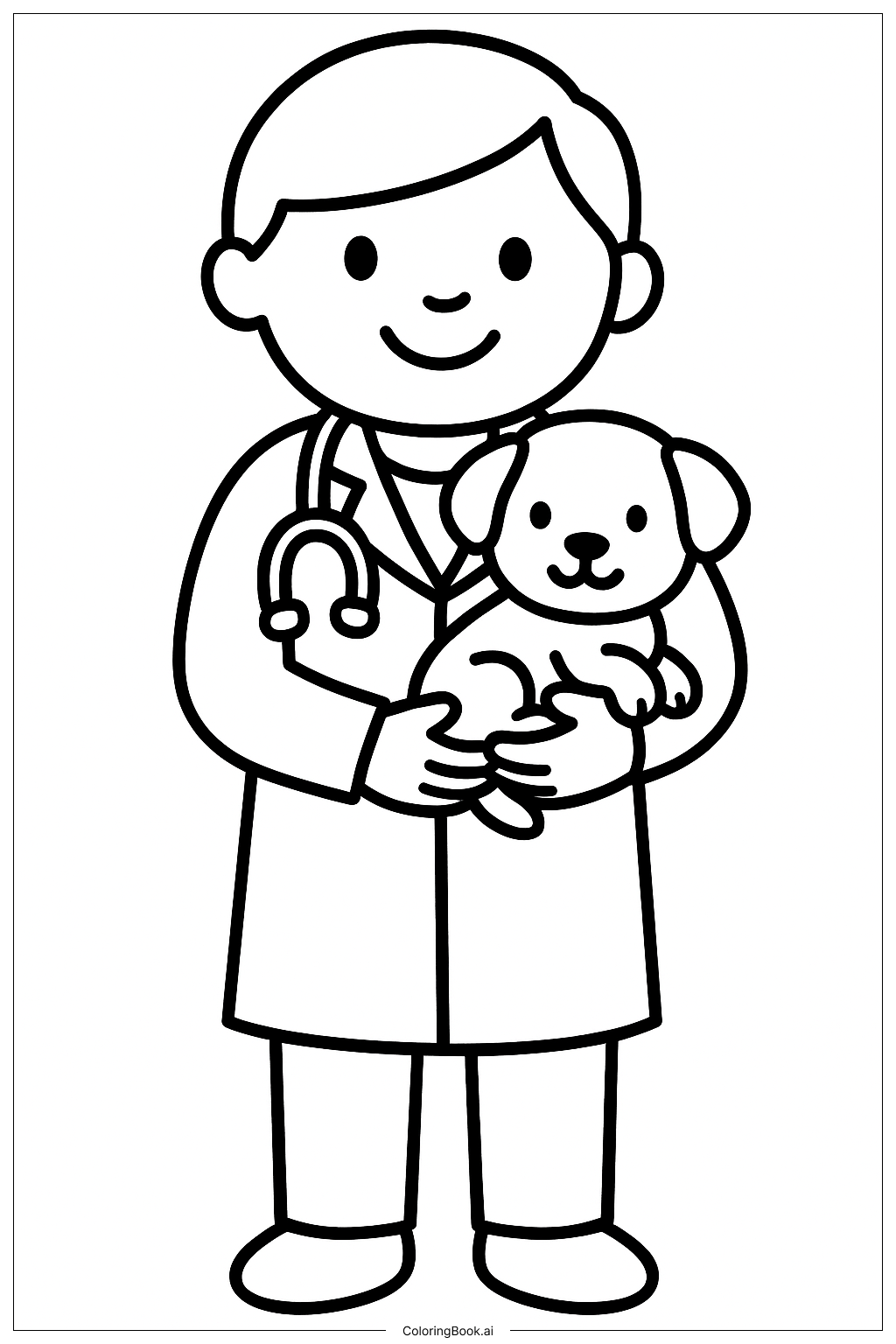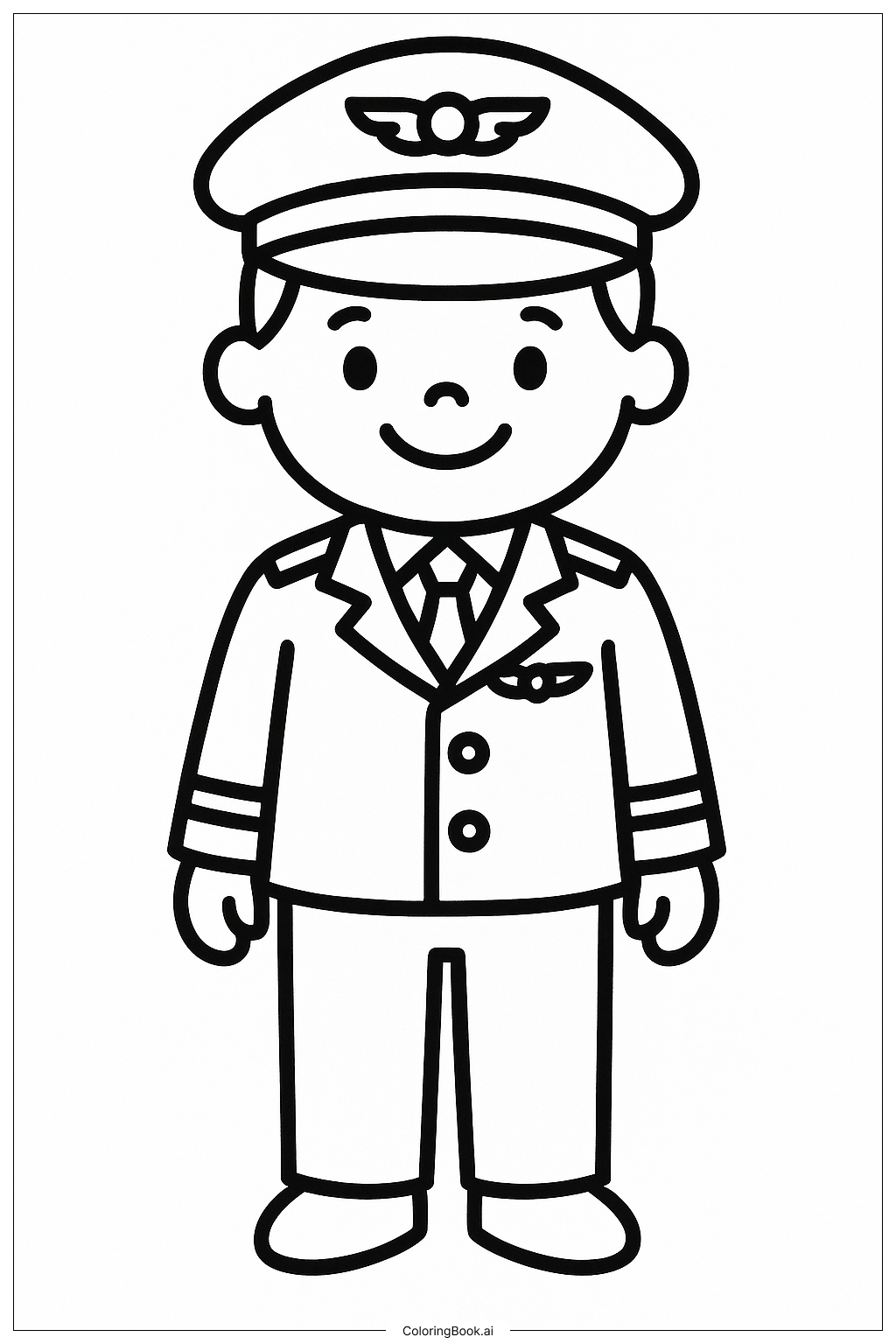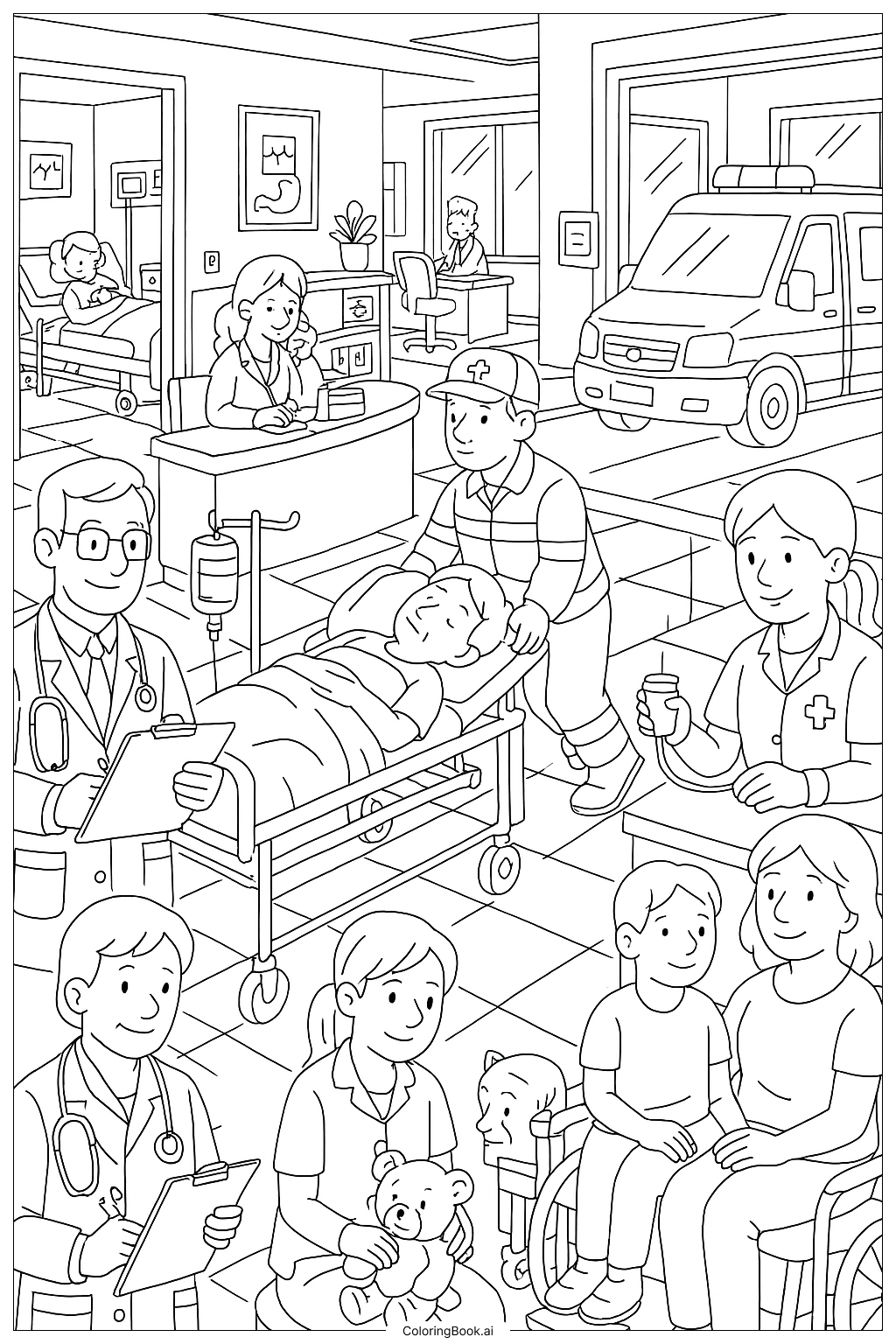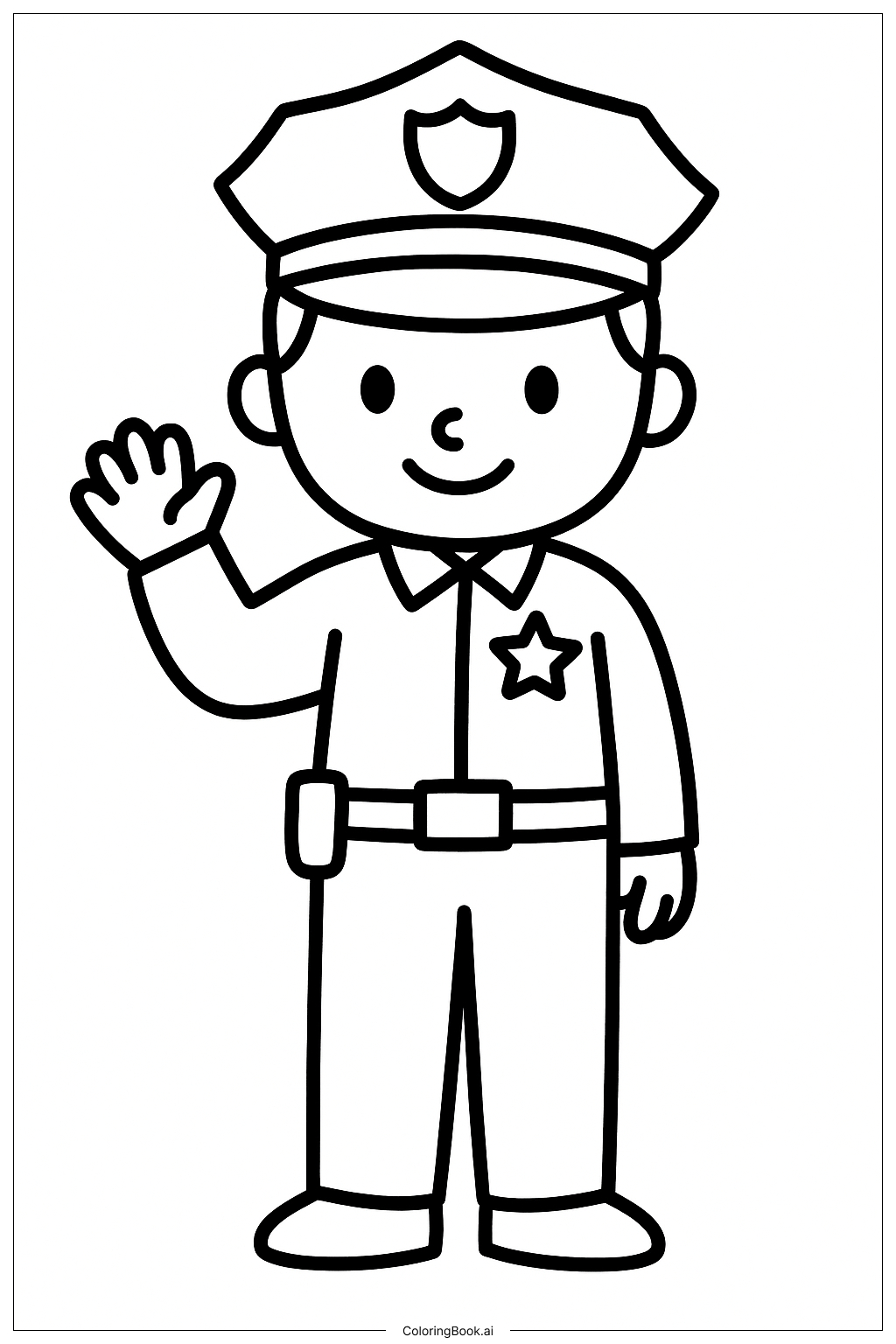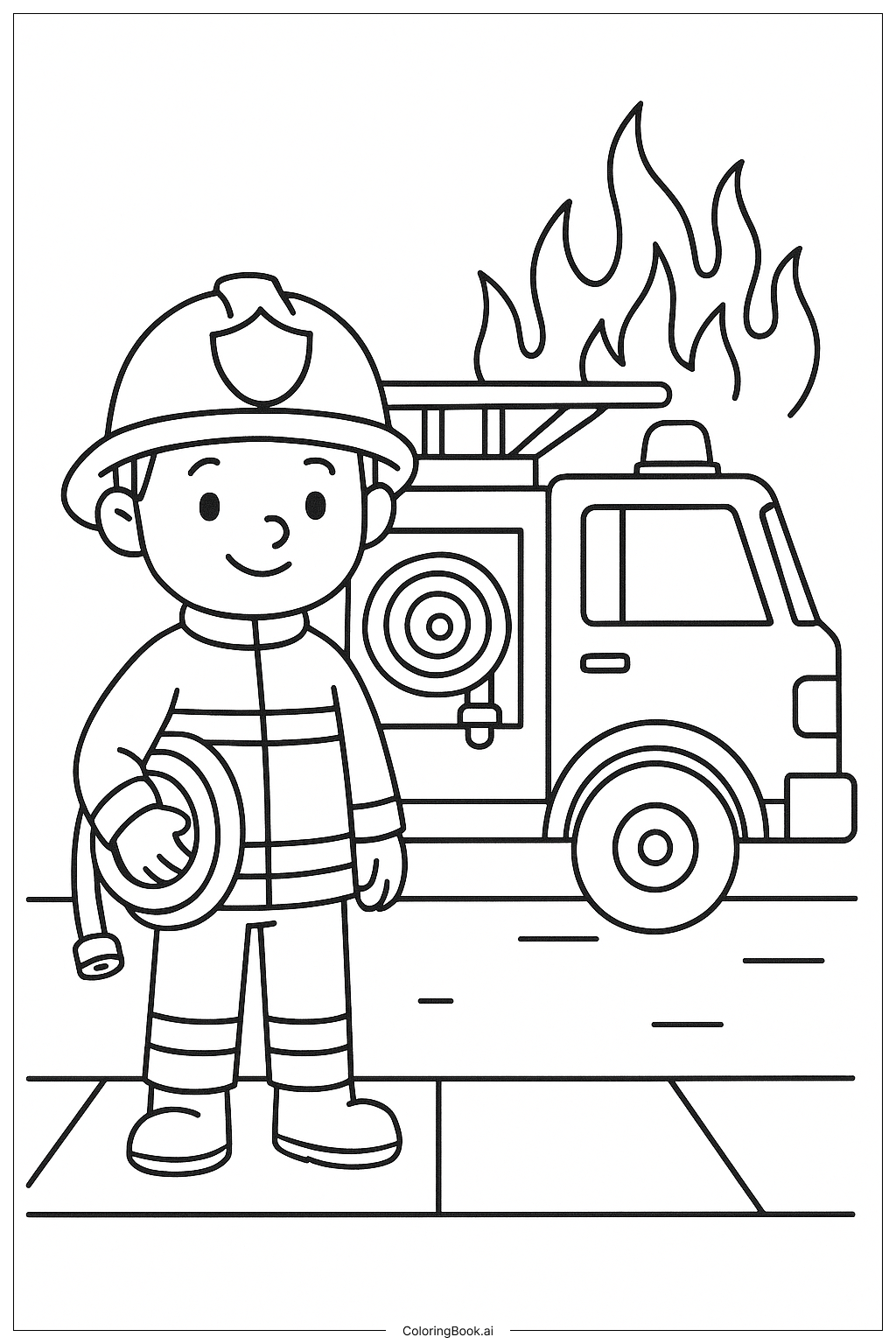Coloring tips: How to color Kind Community Helpers Veterinarian coloring page well?
Use soft colors like light blue, green, or pastel shades for the veterinarian's coat to create a calm and friendly look. Color the puppy with light brown, beige, or white to highlight its cuteness. For the stethoscope, use gray or black to make it stand out. The skin can be colored with natural, light skin tones. You can add color to the background with soft green, blue, or yellow to keep the focus on the veterinarian and the puppy. Try using crayons or colored pencils for smooth filling and easy color blending.
Coloring challenges: Which parts are difficult to color and need attention for Kind Community Helpers Veterinarian coloring page?
1. The small details on the puppy’s face, such as eyes, nose, and mouth, need careful coloring to keep the cute expression clear.
2. The veterinarian’s hands holding the puppy are close together, so coloring inside the lines precisely may be a challenge.
3. Coloring the stethoscope may be tricky because of the small, curved shapes and thin lines.
4. Keeping the colors smooth and even on larger areas like the coat and pants requires attention to avoid color streaks.
5. Balancing the colors so that the veterinarian and puppy stand out from the background without making the picture too busy can be difficult.
Benefits of coloring books: Advantages of drawing Kind Community Helpers Veterinarian coloring page
Coloring this picture helps children improve their fine motor skills by coloring small and large areas carefully. It encourages creativity as they choose colors for the veterinarian and the puppy. Coloring this community helper also teaches kids about kindness and caring for animals. It helps children understand the important role veterinarians play in our communities. This activity can boost focus, patience, and hand-eye coordination while making learning fun and engaging.
